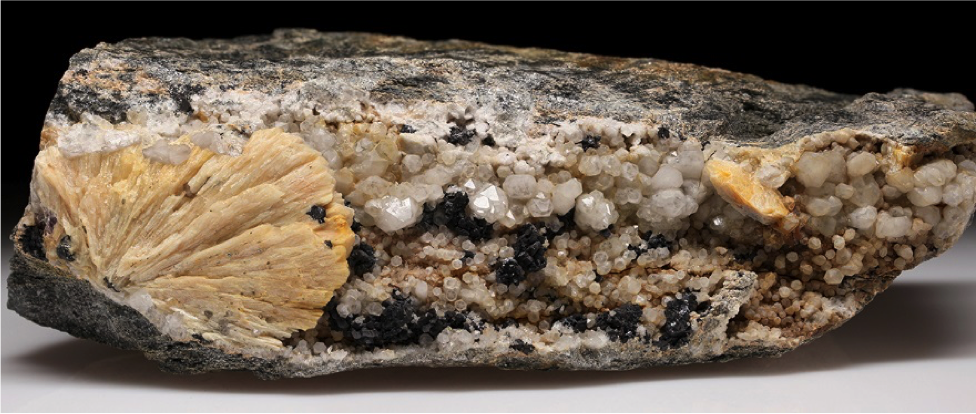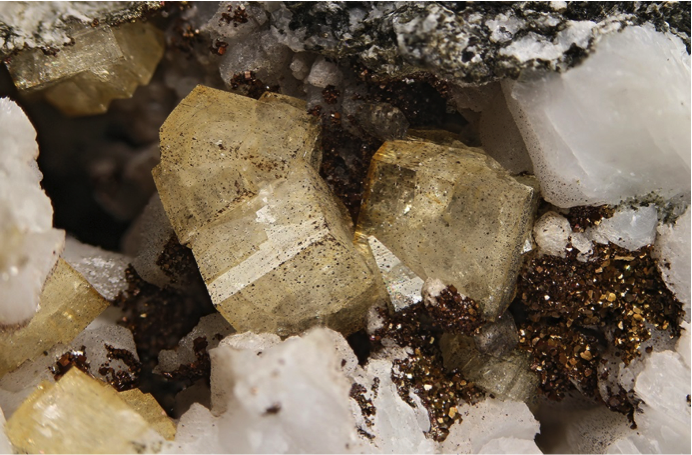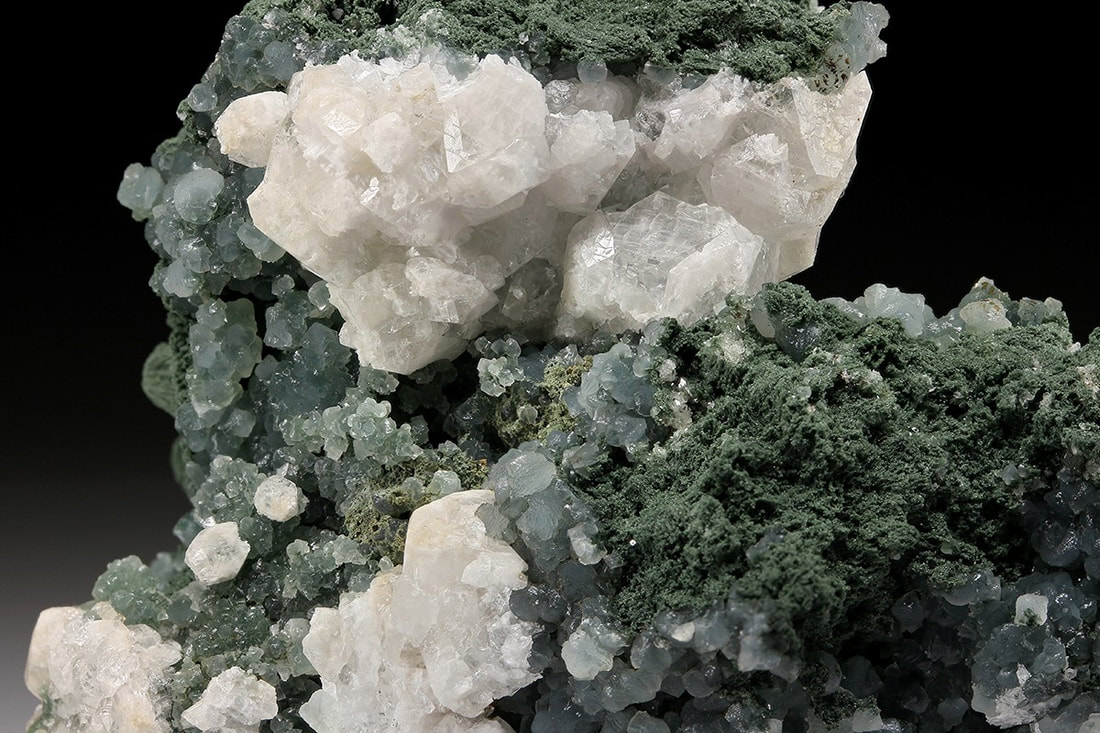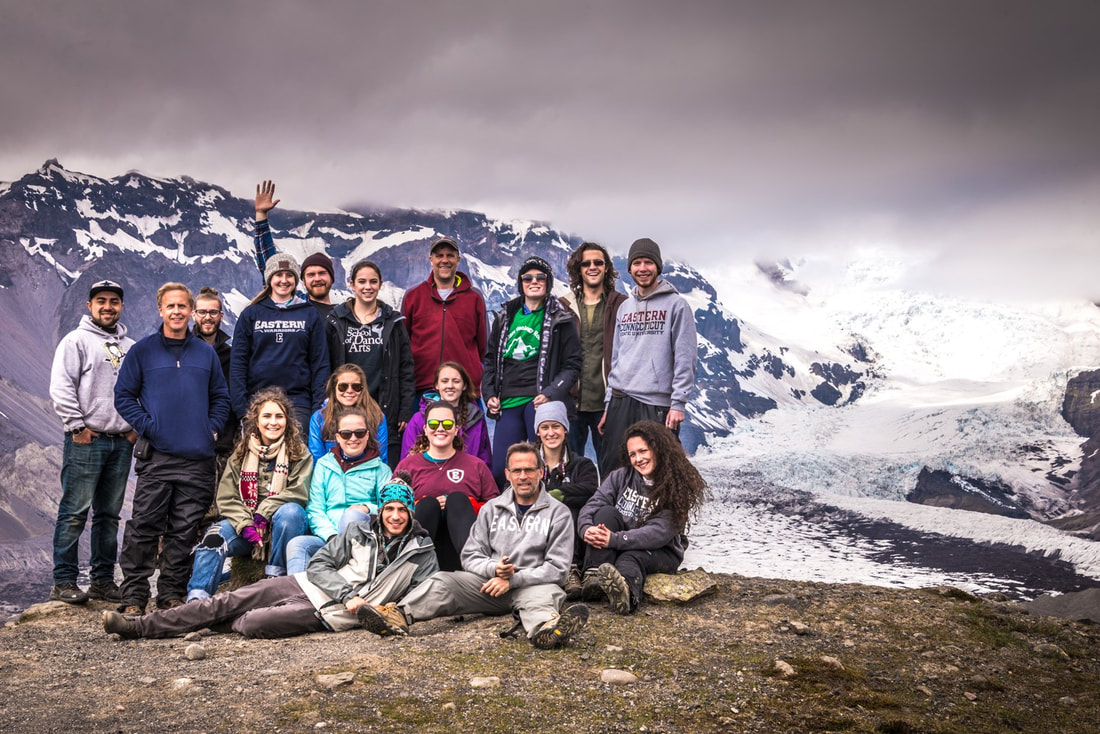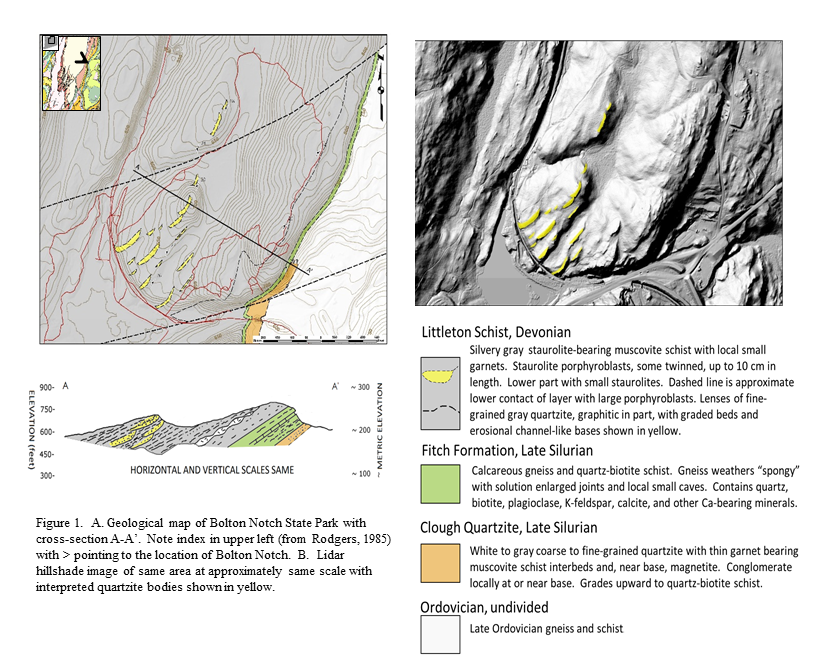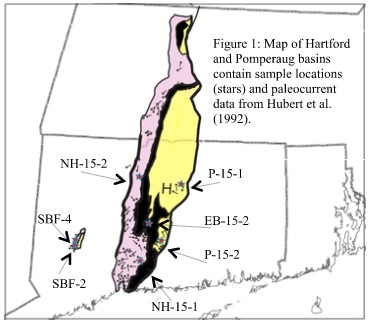The goals of this project were to better determine the particular species of heulandite on the specific samples and from that information hopefully extend the species identifications to unanalyzed specimens from the same localities, and perhaps throughout the state. Consequently, 3 samples were submitted from the very prolific O&G basalt quarry locality and 3 samples from veins and faults hosted by metamorphic rocks. All were initially identified based on their crystal habit and physical properties

